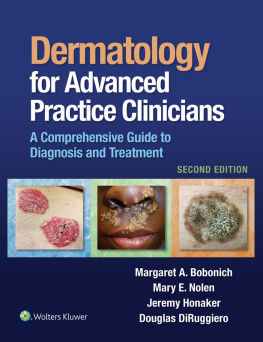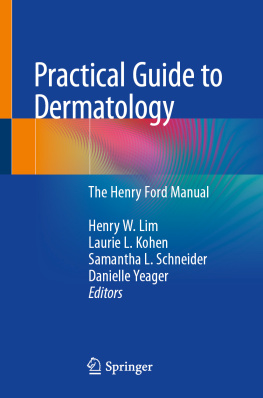Outpatient Coding
New patients you need to meet the level in each of the three areas (HPI, PE, Plan)
HPI: always include four points of history (location, duration, symptoms, severity, alleviating, or aggravating factors
PE: for a new level 3, need to discuss five body parts. (so new alopecia patients. are level 2 since only scalp examined but acne patients. should still be level 3 as you need to check upper back, chest, neck, and upper arms for pustules) Remember to dictate every body part you examine even if findings are negative Ex: no other worrisome lesions noted on exam of the face, neck, scalp, arms, legs, back, chest, etc.
Impression: number each complaint separately
Plan: corresponds to the numbers in plan to match the numbered diagnoses in impression. BE SURE to mention any Rx. written as this supports higher coding. Mention any notes, biopsies, labs reviewed, and any follow-up and any thoughts or considerations on diagnosis or future options as this is medical decision making.
For return patients, you only need two of three areas to reach your code
Ex: level 3 return> you can have a one word HPI as long as you discuss level 3 PE (five body parts) and level 3 medical decision making (Rx. given)
or the 2 out of 3 can be a good HPI covering four points as above with a brief one area PE then a level 3 plan
Table 1
Outpatient medical decision-making grid history
History of present illness (Chief complaint) Location Timing Quality Modifying factors Duration Assoc signs/symptoms Context severity | Brief (13) | 4+ | Extended (four or more) OR >three chronic or inactive conditions |
Review of systems All/immunology, GI Psych, CV, GU, Resp, Endo, Constit, skin, ENT Heme/Lymph, neuro, Eyes, MSK | None | Pertinent to Problem (one system) | Extended (two to nine systems) | Complete (10+ systems) OR > one system and All others negative |
PMH, FH, SH Established patients: two areas New patient/consult: three areas | None | Pertinent to (one history area) | Complete Est: two areas New patient or consult: three areas |
History level | Problem focused | Expanded problem focused | Detailed | Comprehensive |
Physical exam |
System/body area | Elements of examination |
Constitutional | Measurement of any three of the following seven signs: 1.Sitting or standing blood pressure 2.Supine blood pressure 3.Pulse rate and regularity 4.Respiration 5.Temperature 6.Height 7.Weight (may be measured and recorded by ancillary staff) General appearance of patient (e.g., development, nutrition, body habitus, deformities, attention to grooming) |
Eyes | Inspection of conjunctivae and lids |
Ears, Nose, Mouth , and Throat | Inspection of lips, teeth, and gums Examination of oropharynx (e.g., oral mucosa, hard and soft palates, tongue, tonsils, posterior pharynx) |
Neck | Examination of thyroid (e.g., enlargement, tenderness, mass) |
Cardiovascular | Examination of peripheral vascular system by observation (e.g., swelling, varicosities) and palpation (e.g., pulses, temperature, edema, tenderness) |
Gastrointestinal (abdomen) | Examination of liver and spleen Examination of anus for condyloma and other lesions |
Lymphatic | Palpation of lymph nodes in neck, axillae, groin, and/or other location |
Extremities | Inspection and palpation of digits and nails (e.g., clubbing, cyanosis, inflammation, petechiae, ischemia, infections, nodes) |
Skin | Palpation of scalp and inspection of hair of scalp, eyebrows, face, chest, pubic area (when indicated), and extremities Inspection and/or palpation of skin and subcutaneous tissue (e.g., rashes, lesions, ulcers, susceptibility to and presence of photo damage) in eight of the following ten areas: Head, including the face Neck Chest, including breasts and axillae Abdomen Genitalia, groin, buttocks Back Right upper extremity Left upper extremity Right lower extremity Left lower extremity Note: For the comprehensive level, the examination of at least eight anatomic areas must be performed and documented. For the three lower levels of examination, each body area is counted separately. For example, inspection and/or palpation of the skin and subcutaneous tissue of the right upper extremity and the left upper extremity constitute two elements Inspection of eccrine and apocrine glands of skin and subcutaneous tissue with identification and location of any hyperhidrosis, chromhidrosis, or bromhidrosis |
Neurological/Psychiatric | Brief assessment of mental status including: Orientation to time, place, and person Mood and affect (e.g., depression, anxiety, agitation) |
Content and Documentation Requirement for Skin Examination Problem Focused  One to five elements identified by a bullet Expanded Problem Focused  At least six elements identified by a bullet Detailed  At least 12 elements identified by a bullet Comprehensive  Perform all elements identified by a bullet; document every element in each shaded box and at least one element in each unshaded box |














 One to five elements identified by a bullet
One to five elements identified by a bullet At least six elements identified by a bullet
At least six elements identified by a bullet At least 12 elements identified by a bullet
At least 12 elements identified by a bullet Perform all elements identified by a bullet; document every element in each shaded box and at least one element in each unshaded box
Perform all elements identified by a bullet; document every element in each shaded box and at least one element in each unshaded box